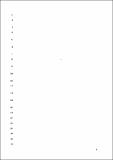Por favor, use este identificador para citar o enlazar a este item:
http://hdl.handle.net/10261/167493COMPARTIR / EXPORTAR:
 SHARE SHARE
 CORE
BASE CORE
BASE
|
|
| Visualizar otros formatos: MARC | Dublin Core | RDF | ORE | MODS | METS | DIDL | DATACITE | |

| Título: | Response of phytoplankton to enhanced atmospheric and riverine nutrient inputs in a coastal upwelling embayment |
Autor: | Teixeira, I. G. CSIC ORCID; Arbones, Belén CSIC ORCID; Froján, M. CSIC ORCID; Nieto-Cid, Mar CSIC ORCID; Álvarez-Salgado, Xosé Antón CSIC ORCID ; Castro, Carmen G. CSIC ORCID; Fernández, Emilio CSIC; Sobrino, Cristina CSIC ORCID; Teira, Eva; Figueiras, F. G. CSIC ORCID | Palabras clave: | Phytoplankton Nutrients Atmospheric deposition Riverine inputs Upwelling system NW Spain Ria de Vigo |
Fecha de publicación: | 2018 | Editor: | Elsevier | Citación: | Estuarine Coastal and Shelf Science 210: 132-141 (2018) | Resumen: | Over the past decades, as a consequence of human activity, there was an increase in nutrient inputs to the ocean and they are expected to enhance even more in the future. Coastal areas, accounting for a significant proportion of marine primary productivity, are the most vulnerable zones to anthropogenic impacts. The response of phytoplankton communities to an increase in organic and inorganic nutrients levels from natural allochthonous sources was assessed in microcosm experiments conducted in a coastal system affected by intermittent upwelling events (Ría de Vigo, NW Iberia). Three nutrient addition experiments were performed in spring, summer and autumn, when surface water was supplemented with 5 and 10% of atmospheric and riverine matter. Pico-, nano- and microphytoplankton abundances, chlorophyll a concentration (Chl a) and primary production rates (PP) were measured and compared with those in the control seawater sample (without additions) after 48 h of incubation. Simultaneous experiments with controlled additions of inorganic and organic nutrients were also performed in order to describe the limiting nutrient for phytoplankton growth at each experiment. The composition of the matter inputs and the structure of the phytoplankton communities determined the type of response observed. Phytoplankton responses varied among seasons, being positively correlated with dissolved inorganic nitrogen (DIN) concentrations. As expected, the phytoplankton responses to external nutrient inputs were stronger under low nutrient levels (summer) than when phytoplankton was already growing in nutrient replete conditions (spring). Null and negative responses to the natural inputs were observed in autumn, which suggests that the oceanic phytoplankton advected to this coastal system during downwelling events could be occasionally inhibited by these nutrient inputs. In a future global change scenario, characterized by enhanced nutrient inputs from riverine and atmospheric origin, the response of phytoplankton communities will strongly depend on the concentration and chemical composition of these inputs and on the structure of phytoplankton communities able to respond to them. | Descripción: | 10 pages, 6 figures, 5 tables | Versión del editor: | https://doi.org/10.1016/j.ecss.2018.06.005 | URI: | http://hdl.handle.net/10261/167493 | DOI: | 10.1016/j.ecss.2018.06.005 | ISSN: | 0272-7714 | E-ISSN: | 1096-0015 |
| Aparece en las colecciones: | (IIM) Artículos |
Ficheros en este ítem:
| Fichero | Descripción | Tamaño | Formato | |
|---|---|---|---|---|
| Response_phytoplankton_2018.pdf | 766,16 kB | Adobe PDF |  Visualizar/Abrir |
CORE Recommender
SCOPUSTM
Citations
13
checked on 24-abr-2024
WEB OF SCIENCETM
Citations
11
checked on 22-feb-2024
Page view(s)
393
checked on 24-abr-2024
Download(s)
302
checked on 24-abr-2024
Google ScholarTM
Check
Altmetric
Altmetric
Este item está licenciado bajo una Licencia Creative Commons

